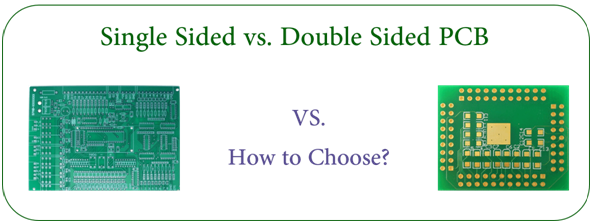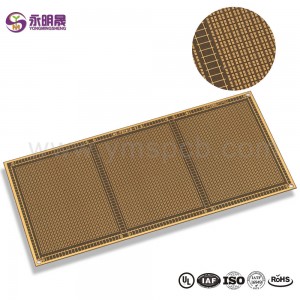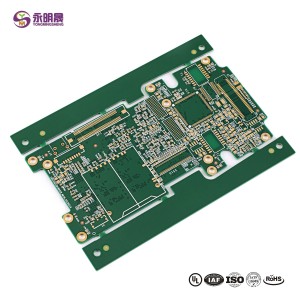Chinese PCB manufacturer tells you
Printed circuit boards (PCBs) can be classified based on many things, including their fabrication process, application, or design specifications. When choosing a PCB, factors such as stress, mechanical strength, electrical stability, and space constraints must be taken into consideration. Single-sided PCBs and double-sided PCBs are two such classifications that are based on which side the conductive copper and components are on. Space constraints, cost, and circuit density are factors that designers must consider when choosing between single-sided PCBs and double-sided PCBs. In this article, we will compare single-sided PCBs vs. double-sided PCBs and explore their appropriate applications.

Single Sided & Double Sided PCBs – What’s the Difference?
Various types of printed circuit boards are commonly used in electronics and applications which make PCBs a highly valuable technology. From computers and mobile phones to radio equipment and machinery, circuit boards are all used in these applications. Single sided printed circuit boards are widely used in many electronics whereas double sided circuit boards are often used in higher technology electronics.
These printed circuit boards are very similar which can make it difficult to choose between the two for manufacturing. They both provide their advantages for various applications, but it comes down to what you need from these PCBs.
What are Single Sided PCBs?
Printed circuit boards or PCBs, are used to connect electronic components and these boards are commonly used in a wide variety of electronic devices. Single sided printed circuit boards are a type of circuit board that has the conductive copper and components mounted on one side of the board and the conductive wiring connected on the other side. These PCBs are one of the most commonly produced boards as they are very simple and basic to make.
Single sided printed circuit boards are commonly used in an array of electronics and applications, including: camera systems, printers, radio equipment, calculators, and much more.
What are Double Sided PCBs?
Double sided PCBs are very similar to single sided PCBs, except that they have two sided traces with a top and bottom layer. These boards can mount conductive copper and components on both sides of the circuit board, which allows the traces to cross over each other. This results in a higher density of circuits without the need of point-to-point soldering. As these types of circuit boards are more complex than single sided PCBs, it can be more difficult to produce. However, the benefits of using double sided PCBs far outweigh the cons.
Double sided circuit boards are one of the most popular types of PCBs as they enable manufacturers to produce more complex circuits, which can benefit uses in higher technology applications and electronics. There is an abundance of applications and electronics which double sided PCBs can be used in including: lighting systems, vending machines, amplifiers, car dashboards, and many more.
Benefits of Single Sided PCBs
Single sided circuit boards are considered to be one of the best choices for a wide range of applications due to the advantages that it provides. Here are a few advantages of single sided printed circuit boards:
· The cost of manufacturing and producing single sided circuit boards are very cost-effective and affordable due to the simple and basic designs. These types of PCBs are widely understood by various manufacturers which makes single sided boards the best choice for circuit designs that are simple and low density.
· As single sided boards are less complex, there will undoubtedly be fewer problems during the manufacturing stage, which enables manufacturers to produce these boards at higher volumes and at faster speeds. Due to this, they are commonly used in many applications and electronics.
· With higher volume orders, single sided circuit boards can be more affordable and available at reduced costs.
Benefits of Double Sided PCBs
Double sided PCBs are a widely used component for various applications as it enables more flexibility in the design and more complex circuits. Here are a few advantages of double sided boards:
· The main benefit of double sided boards is that you have an extra layer to add more components, which effectively increases the density of the circuit. With more space available of the circuit board, this increases the flexibility of the design, enabling you to place more components and have room for extra connections if needed.
· Double sided circuit boards tend to use more complex circuitry as there is more space. This means that these boards are perfect for advanced electronics or demanding applications.
· Being able to use both sides of the circuit board effectively reduces the size of the board needed. This can be a great cost-saving which makes double sided PCBs less expensive.
· When you are in the process of fabricating your printed circuit boards it is important to understand the differences between types of PCBs so you choose the one that will be best for your application. YMS is here to help you get PCBs you need and offers tips to get you started in the right direction. Single sided boards are made from rigid laminate with copper on one side of varying thickness. Double-sided boards differ in that they have copper on both sides of the laminate. A multi-layer PCB has copper foil on the top and bottom and inner layer cores. Each type of PCB has its own unique advantages so work with YMS to get the one that is best for you.
Post time: Jul-07-2022


